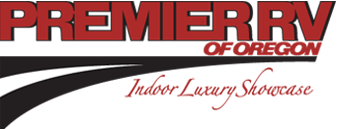Quick Look
General Specifications
Description
Maintaining Your RV Toilet And Why You Should
By Bob Nielsen
The toilet in your mobile RV is not particularly hard to keep running-but it is one of the most essential parts of your RV that should undergo regular maintenance. Most RV toilets work just like regular toilets in a home, except the sewage tank for the toilet is held in the RV instead of in an outside sewage tank taken care of by a city or town. In other words: you are responsible for the sewage you create.
Regular maintenance of your RV toilet will keep it running smoothly, prevent a build-up of odors, prevent blockages, and prevent overflowing- and more. Regular maintenance for your RV toilet consists of a few easy-but vital-steps.
Step 1: Prevent odors with RV toilet chemicals
Sewage odors are among the most common problems with RV toilets, due to the simple fact that the sewage tank is located in the RV itself. To help prevent a smelly odor problem, you will need to buy an RV-specific toilet chemical. Do NOT purchase chemicals designed for regular toilets, as these are often far too harsh and can actually wear down your plumbing!
RV-specific toilet chemicals are primarily intended for odor control. Some brands are also used to help dissolve toilet paper and toilet waste, which can make it easier (and less disgusting) to empty your sewage tank. The most popular brands are Enviro-Chem and Aqua-Kem. Odor-control can come in powder, liquid or packet format.
Step 2: Preventing Blockage and Overflow
Home toilets (and regular sewage tanks) can usually take more of a beating than an RV toilet. You should avoid putting anything that can not be dissolved or broken down by your RV toilet chemicals into your toilet. This includes napkins, paper towels, q tips, wipes, pads and other feminine products, and so on. Even one of these items can create a potential blockage that might leave you dealing with a back-up of sewage or a blocked toilet.
You can prevent problems like overflow and blockage even further by purchasing toilet tissue that is specifically designed for RV toilets. This tissue will dissolve much easier and faster than regular toilet paper, and will help you out in the long run.
Step 3: Regularly Empty Your Tank
Emptying your sewage tank on a regular basis is essential for reducing odors and preventing potential back-up problems. You might be tempted to empty out the tank as often as possible–but don’t. You should only empty your tank once it is at least 3/4 full, for two reasons: a) a fuller tank will actually move faster through your sewage hoses and b) it gives your RV-toilet chemicals more time to break down your waste and toilet paper. But you will need to be careful not to avoid emptying your tank for too long, since this can cause an even stronger odor problem.
About the Author:
Hello, My name is Bob and I am co-owner of Mobile RV Maintenance ™ an onsite RV repair service. Our services are always at reasonable prices because we are campers too and we know what it’s like to have our rig hurt and needing repair. When you visit our Mobile RV Maintenance page you can determine where we’re located and our services.
Article Source: http://EzineArticles.com/?expert=Bob_Nielsen

